The magnitude of the voltage is relative to the selected reference. When the actual voltage is lower than the comparison voltage, the voltage value is negative. In the other case, when the selected voltage reference direction and current reference direction are opposite, the reference voltage is the inverse of the actual voltage.
Negative voltage is relative. First we need to have a reference. For example: If a voltage requirement of 4.0V is present, then a voltage higher than 4.0 is a positive voltage, and a small voltage is a negative voltage. There is a power module that can output both positive and negative voltages at the same time. It's not really how much voltage you can output -*.
Negative voltage generation circuit principleIn electronic circuits we often need to use negative voltages. For example, we often need to establish a negative voltage for him when using an op amp. The following is a simple example of 5V from the positive voltage to 5V negative voltage to talk about his circuit.
Usually when I need to use a negative voltage, I usually choose to use a special negative voltage to generate chips, but these chips are more expensive such as ICL7600, LT1054 and so on. Oh, I almost forgot that the MC34063 used this chip is the most used, on the negative voltage generating circuit of 34063 I do not say in the datasheet. Let's take a look at the two types of negative voltage generating circuits that we commonly use in the microcontroller electronic circuit.
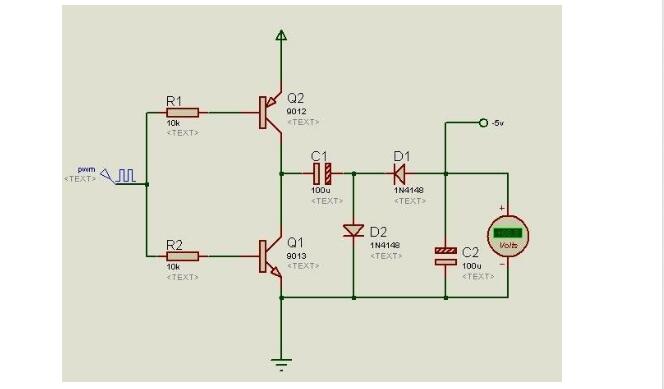
Many microcontrollers now have PWM outputs. When we use microcontrollers, PWM is often not used. It is a good choice to use it to generate negative pressure.
The above circuit is the simplest negative voltage generating circuit. The originals he uses are the fewest. We only need to provide him with a square wave of about 1kHZ. It's quite simple. It is important to note here that the load capacity of this circuit is very weak, and the voltage drop is also large after the load is applied.
The following circuit is generated for the above reason:
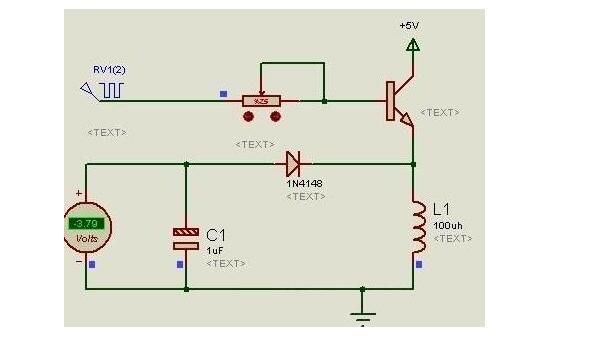
The definition of voltage: Voltage, also known as potential difference or potential difference, is the physical quantity that measures the energy difference of the unit charge due to the difference in potential in the electrostatic field. Its size is equal to the work done by the unit's positive charge due to the electric field force moving from point A to point B. The direction of the voltage is defined as the direction from the high potential to the low potential.
To put it plainly: The voltage at a certain point is the difference between the potentials relative to a reference point. V = E - E parameters. Generally we use the negative pole of the power supply as a reference point. The power supply voltage is Vcc=E power supply positive-E power supply negative.
If you want to generate a negative voltage, you can make it lower than the potential of the negative electrode of the power supply. To be even lower, there must be another power supply intervention. The fundamental principle is to use two power supplies in series. The positive pole of the power source 2 is connected in series behind the negative pole of the reference power source 1 . The negative pole of the power supply 2 is a negative voltage.

A negative voltage generation circuit: The use of a capacitor to charge a new equivalent power supply, after the capacitor in series with GND, equivalent to power supply 2. It produces a negative voltage.
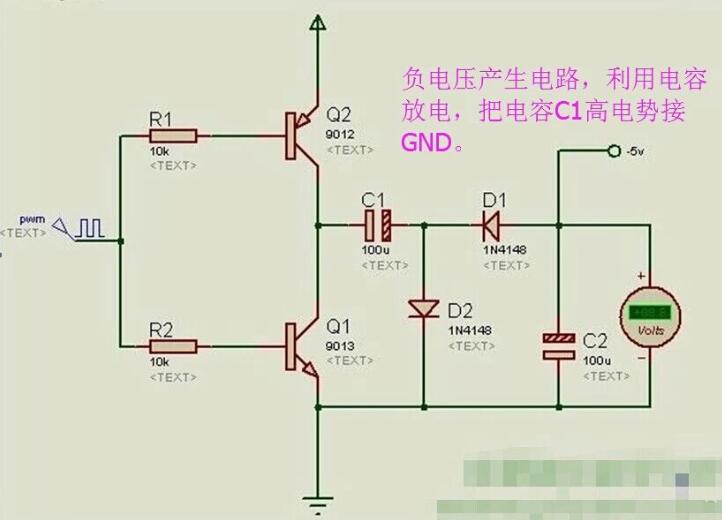
1, capacitor charging
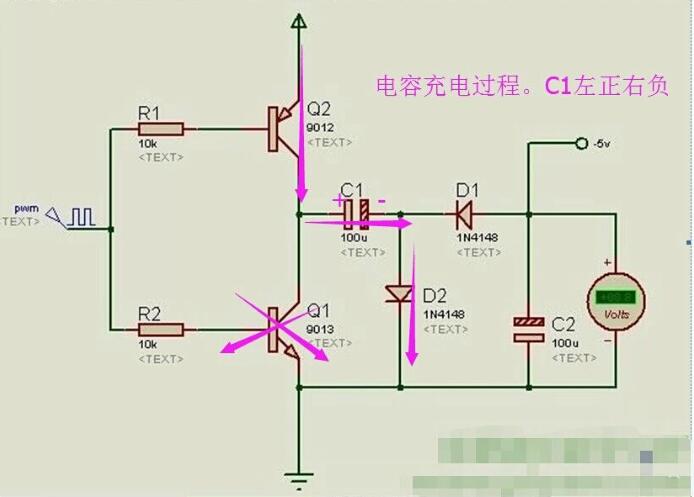
2. Capacitor C1 is fully charged
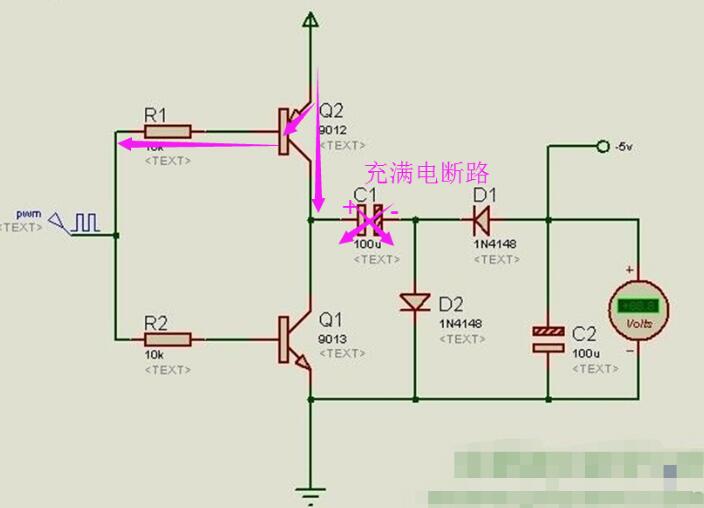
3, capacitor C1 as a power supply, C1 high potential pole in series at the reference point. C1 discharges and freewheels from C2 to produce a negative voltage.
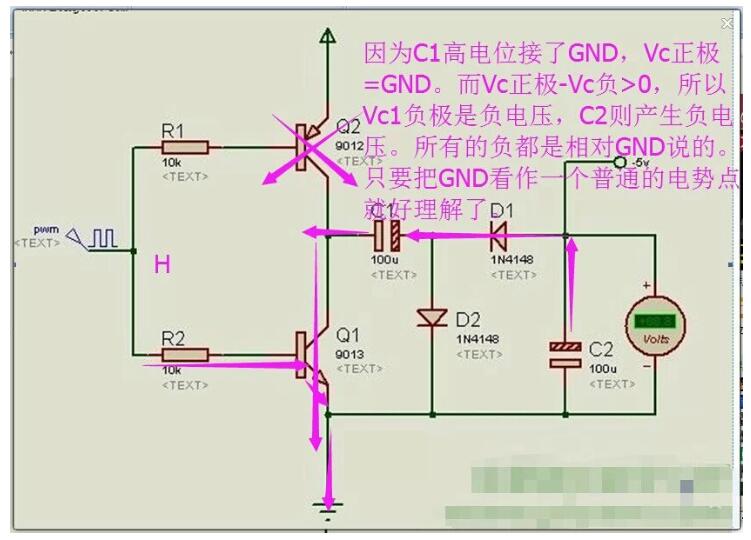

The 7660 and MAX232 have limited output capabilities and it is very difficult to do oscilloscopes with high-speed op amps, so Wei Kun has to use 4 parallel-connected methods to expand.
The first version is 7660 two parallel.
With a normal DC/DC chip, a negative voltage can be generated, and the voltage accuracy is the same as the positive voltage, and the driving ability is also very strong, and can reach 300 mA or more.
General switching power supply chip can generate negative voltage, it is impossible to use the PWM output of the switching power supply to push the charge pump, it can also generate a large current, the cost is very low, I do not know how much the ripple requirements, after the charge pump LC filter The ripple is quite small. The 7660 is a charge pump so the current is very small.
The entire oscilloscope is designed to provide separate power for +5V of digital power and +5V for analog power, but what should be done with digital ground and analog ground?
Digital and analog grounds must be connected together, otherwise the circuit cannot work.
The ground return current of the digital part cannot flow through the analog part, and the two grounds should be connected together at the stable ground reference point.
The meaning of negative voltage1, artificial regulations. For example, the telephone system is powered by -48V, which prevents electrochemical corrosion of the telephone line. Of course, answering the phone is also workable. It is nothing more than a change in the voltage reference point.
2, communication interface needs. For example RS232 interface, you must use a negative voltage. -3V to -15V indicates 1 and +3 to +15V indicates 0. This is the protocol when the communication interface was originally designed and can only be followed. PS: MAX232 like interface chip comes with a charge pump, you can generate a negative voltage.
3. Provide power rails for (non-rail-to-rail) op amps. Older op amps have no rail-to-rail input/output capability, such as the OP07, where the input voltage range is always 1V less than the supply voltage range and the output is 2V smaller. So if VEE uses 0V, then the input voltage must exceed 1V, the output voltage will not be lower than 2V. This may not meet the design requirements of some circuits. To be able to operate at input/output conditions close to 0V, it is necessary to provide the op amp with a negative voltage, for example -5V, so that the op amp can operate normally around 0V. However, with the popularity of rail-to-rail op amps, this situation has become increasingly rare.
4, this is more Chinese characteristics, self-destruction circuit. In general, the protection circuit inside the chip is undefended against negative voltage. Therefore, as long as the current is slightly larger, the voltage can be successfully destroyed without adding a high negative voltage to the chip.
APM AC Power Supply offers cleaner, more reliable power to confidently test your electronic product designs and prototypes. With 300V output voltage and full range adjustable frequency of 15-1200Hz, it`s capable simulating all kinds of electricity system. Model SP300VAC4000W ac power source is capable of delivering up to 5 times of peak current compared to its maximum rated current that makes it ideal for inrush current test. With various communication interfaces, this can remote control from the computer.
Some features of the ac source as below:
- 5.6"large touch color screen
- AC+DC mixed or independent output mode
- Capable of setting output slope/phase angle
- Built-in IEC standard test function
- Built-in multiple protections
- Built-in power meter
- Support impedance function
- Support for LIST/PULSE/STEP mode & Transient mode
- Standard RS232/RS485/USB/LAN, Optional GPIB/multiphase card.
- Support master and slave parallel mode to realize power extension
- Support harmonics/inter-harmonics simulation and measuring function
- Support for USB data import/export and scree nap from front panel
- PWM technologies, with up to 86% efficiency
- CE, CSA, UL, ROHS Certified
4000W AC Power Supply,Adjustable AC Power Supply,Programmable Ac Power Sources,Ac Ac Power Supply
APM Technologies Ltd , https://www.apmpowersupply.com
![<?echo $_SERVER['SERVER_NAME'];?>](/template/twentyseventeen/skin/images/header.jpg)